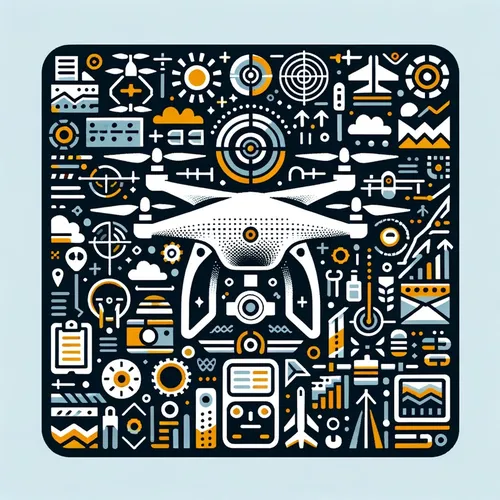Drones Soar in 2025: Juicy Secrets to Dominate the Skies and Rake in the Cash
- Author
- Quiet. Please
- Published
- Sun 17 Aug 2025
- Episode Link
- https://www.spreaker.com/episode/drones-soar-in-2025-juicy-secrets-to-dominate-the-skies-and-rake-in-the-cash--67400322
This is you Professional Drone Pilot: Flight Tips & Industry Updates podcast.
Professional drone pilots continue to push the boundaries of aerial operations, with 2025 shaping up as a pivotal year for those in commercial photography, inspection, and specialty applications. Advanced flight techniques are now enabling operators to tackle increasingly complex missions. Precision orbiting, automated mapping, and waypoint programming have become standard in many industries, and mastering these skills in platforms such as the DJI Mavic 4 Pro or the more budget-conscious DJI Air 3S can deliver a real competitive edge. To keep equipment at top performance, schedule firmware updates, calibrate sensors before each mission, and adhere strictly to manufacturer maintenance cycles—neglect here remains a leading cause of in-flight failures.
From a business standpoint, the drone sector is booming. Stellar Market Research projects the commercial drone market will surge at nearly a fifteen percent annual growth rate through 2032, hitting almost sixty-eight billion dollars. This is driven not just by increased demand in real estate, construction, and agriculture, but by the rise of fully autonomous drone operations, which allow professionals to cover larger areas efficiently and conduct missions beyond visual line of sight—a trend accelerating due to new regulatory backing. According to Commercial UAV News, drones are moving rapidly into critical infrastructure inspection, agri-tech, and high-value logistics, unlocking substantial profit opportunities for pilots willing to upskill.
In licensing, the Federal Aviation Administration now enforces a two-year recurrent training interval for remote pilots, expanding on knowledge of controlled airspace, weather impacts, and emergency contingencies. Governments globally—including the United States—are updating frameworks to support longer-range, beyond visual line of sight operations. Staying compliant is now an ongoing process, as outlined by the FAA and major training programs.
On the client side, demand for drone-based services such as aerial photography and inspection remains high. The National Association of Realtors noted homes marketed with aerial images are almost seventy percent more likely to sell. To stand out, bundle value-added services like advanced post-production or tailored analytics. Pricing should reflect hours of operation, complexity, deliverable quality, and insurance costs—professional liability policies are increasingly essential as regulatory scrutiny sharpens.
For weather and flight planning, leverage real-time meteorological data and advanced mapping solutions. Monitor wind patterns and potential precipitation, and build in robust no-go criteria to maximize safety and avoid liability. With rapid growth in drone insurance offerings, review your policy annually to ensure compliance and protect against evolving risks.
Key news this week: the FAA is piloting expanded beyond visual line of sight waivers in select states, a major equipment manufacturer has announced a new sensor suite for autonomous mapping, and several states are pushing incentives for agriculture drone adoption.
Stay nimble—continue education, diversify your service mix, and keep a close watch on autonomous technology integration. The future points toward larger, coordinated drone fleets and fully automated inspection routines. Thanks for tuning in. Come back next week for more. This has been a Quiet Please production. For more, check out Quiet Please Dot A I.
For more http://www.quietplease.ai
Get the best deals https://amzn.to/3ODvOta
